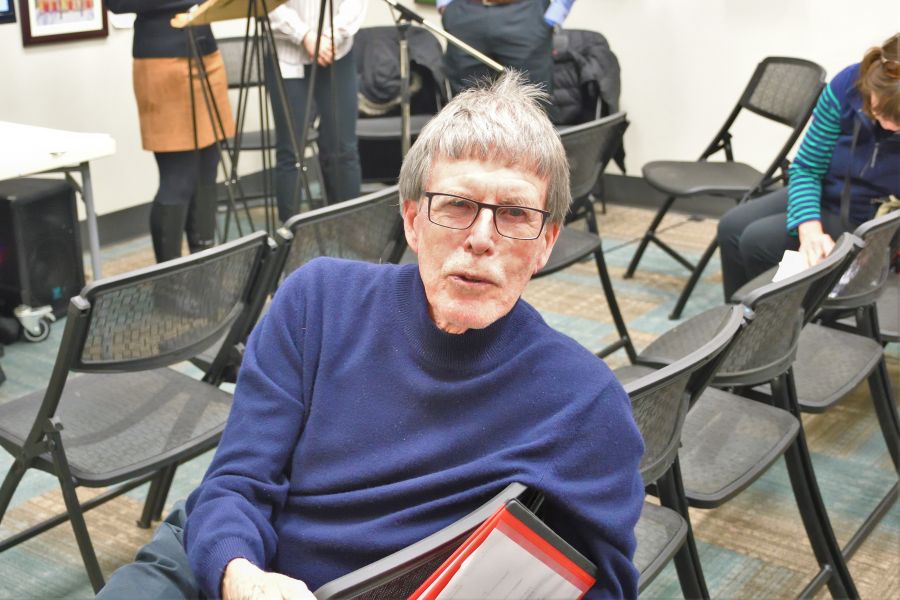Early in the COVID-19 pandemic before effective vaccines were available, life-threatening cases were common even among healthy, young health care workers.
Even so, most fatal cases involved the elderly, those with multiple comorbid medical conditions and others with compromised immune systems.
Fortunately, with the advent of effective mRNA vaccines, regular booster shots and the development of antibody and antiviral drugs, hospitalizations and severe COVID cases are much less common, if not entirely gone.
But because the virus continues to mutate, we’re not out of the woods yet.
From the outset of COVID, some patients developed chronic, even debilitating symptoms, which lasted many weeks, and in some instances several years.
Some people were severely ill with COVID at the outset but there were others who had a mild infection or perhaps tested positive without symptoms yet went on to develop what’s been called “long COVID.”
The incidence varies widely from as low as five per cent to as high as 30 per cent of COVID cases — the spread perhaps a reflection of differing criteria for the diagnosis and uncertainty about the underlying causes and pathology.
In the early days of COVID, many of the most seriously ill patients developed large blood clots affecting blood vessels in the brain, lungs, and other organs.
However, in the case of long COVID, it wasn’t the large blood clots sometimes seen in acute COVID that are the problem.
Rather, it was the presence of putative tiny blood clots in the circulation and tissues that prompted some scientists to suggest that it was those tiny clots, which might be the cause of some of the symptoms in long COVID.
Going further, some scientists and patients suggested that anticoagulants and filtering the blood made sense for treating long COVID.
Despite hundreds of studies, some very expensive and long, no one knows what causes long COVID.
The symptoms are real enough: debilitating fatigue, loss of energy, headaches, trouble concentrating, focusing and memory loss (what’s been called “brain fog”), difficulty sleeping and a host of other symptoms similar in nature, if not cause, to the chronic fatigue syndrome, chronic Barr-Epstein virus infections, and what followed some cases of SARS-Cov1.
Some suggest that persistence of COVID viral particles, especially the spike protein or even the whole virus, may play roles in provoking and sustaining inflammatory immune responses, as well as possible continuing mutations in the host’s COVID virus.
The frustrating situation now is that several years after the pandemic began, we’re no further ahead in understanding the cause of long COVID.
This is despite exhaustive studies that show intriguing possible factors such as the presence of those tiny blood clots, evidence of on-going inflammation and the presence of the virus or at least parts of it in some patients with long COVID.
That makes it difficult to manage long COVID, just as it is to manage other long post-viral symptoms.
Sometimes humans infected with a virus carry it for a lifetime. That happens with chickenpox, which may lay dormant for several decades before a bout of shingles develops.
Fortunately, the Shingrix vaccine is effective at preventing those sometimes painful and prolonged outbreaks in 90 per cent of those carrying the dormant virus.
The latter protection isn’t 100 per cent, nor is there any guarantee that the protection offered by Shingrix will last more than 10 years.
I doubt that we will ever know what causes most cases of long COVID or that the symptoms will entirely resolve in all patients. Unfortunately, some medical problems remain enigmas, and how to treat them mysteries.
One example involves the recent fiascos over the Food and Drug Administration’s (FDA) flip-flopping approval, non-approval, conditional approval, back to approval status of several new monoclonal antibody (mab) drugs designed to rid the brain of accumulations of various forms of amyloid in patients with Alzheimer’s disease.
They all do that, more or less, but none slow the decline in cognitive and behavioral status in ways that we would clinically notice, and most are associated with significant, even dangerous, side effects.
It’s a story fuelled by enormous pressure from pharmaceutical companies, which have invested billions in these drugs, and understandable pressure from patients. their families and Alzheimer’s societies.
Everyone lost in this one, including the reputation of the FDA. Recently two similar drugs (based also on monoclonal antibodies) failed in Parkinson’s disease.
It’s tricky finding effective treatments for neurodegenerative diseases, where treatments may help but the benefits are modest, and costs are development and costs for the patient are high.
High expectations are often fuelled by ads (watch CNN any days) and those promoting the drugs. And when treatments fail to deliver, or the effectiveness is iffy and accompanied by significant side effects, it’s very hard on families and patients.
Here clinics, physicians and scientists all too often aren’t as sensitive as they could be.
That’s what seems to be happening with long COVID these days.
Dr. William Brown is a professor of neurology at McMaster University and co-founder of the InfoHealth series at the Niagara-on-the-Lake Public Library.










